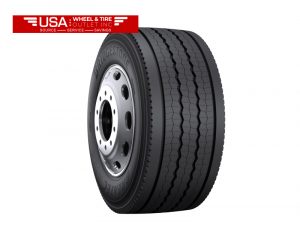They also provide load support. Typically, they are employed in agricultural, industrial and heavy-duty transport environments R-123 tires are well-known for their capability in harsh conditions. In this article we’ll look at the most important uses, advantages and load ratings of R-123 tire, to assist you in understanding why they could be the best option for your equipment. In the field of heavy-duty and specialty tire, the R-123 tires stand out due to their distinctive design and load-bearing capability. They have been specifically designed for use in areas that require extreme endurance and stability.
What Are R-123 Tire?
R-123 tires are widely used in machinery and vehicles that carry heavy loads or operate on rugged terrains, such as trailers, agricultural equipment, or industrial trucks. These tires are specifically designed for heavy-duty applications, combining a robust build with unique tread patterns that ensure durability, stability, and long-lasting performance.
For challenging conditions, USA Wheels Tires provides R-123 tires with high-performance capabilities. Their strong sidewalls and reinforced treads make them exceptionally resistant to wear and damage, making them ideal for demanding environments.
Key Applications of R-123 Tire

1. Heavy-Duty Trailers
To trailers carrying bulky objects as well as heavy machinery, the R-123 tires provide the needed load support. They are stable even with a significant load, ensuring the safety and reliability needed for towing commercial and industrial applications.
2. Construction Equipment
Construction machinery, including excavators and loaders employ R-123 tires. They can withstand the arduous requirements of construction sites when they are exposed to dirt, rocks and heavy loads.
Safety is essential when working with large machines and loads. Stability and grip that is offered by R-123 tires decrease the chance of accidents, especially when working on rough or slippery terrain.
3. Industrial Vehicles
R-123 tires are also used on industrial vehicles, such as the forklift and materials transporters. The tire’s strength and load capacity makes it suitable to carry heavy objects as well as moving around factories, warehouses as well as other industrial settings.
Advantages of Using R-123 Tire

1. Versatile Applications
R-123 tire are relatively versatile, able to assist various machines and vehicles throughout various industries. This flexibility provides price specifically for businesses with numerous desires for gadget.
2. Improved Traction and Stability
With their competitive, deep treads R-123 tire offer first rate grip, particularly on choppy or sloppy surfaces. The tread pattern aids in balance, which prevents moving or slips even as appearing the towing approach or while going for walks gadget.
3. Enhanced Safety
Safety is important while operating with large machines and masses. Stability and grip that is presented with the aid of R-123 tire lower the risk of injuries, specifically while operating on tough or slippery terrain.
4. High Load-Bearing Capacity
One of the main advantages of R-123 tires is their capacity to carry loads. They are specially designed to support loads of a high weight and are appropriate to industries that demand frequent transport of bulky or heavy materials.
Understanding Load Ratings for R-123 Tire
A load rating usually expressed in kilograms or pounds is the highest amount of weight that a tire is able to safely carry. R-123 tire generally have loads that are high, however it’s essential to review the specifications for each tire to warrant it’s in line with the specifications of your equipment. Load ratings are vital in choosing the best tire for your machine
Benefits of High Load Ratings
R-123 tires which have higher load ratings enable the secure transportation of heavy material with out compromising on performance. This feature is essential for businesses like production, agriculture and production, in which device is frequently carrying big weights.
Tips for Maintaining R-123 Tires
To get the most mileage of the R-123 tires, reg
Check Tire: Pressure Proper inflation increases the tire’s capacity to carry loads and extends its lifetime.
The Rotation of Tires: Rotating tires stop uneven wear, which prolongs their lives and keeps the performance.
Avoid overloading: Be sure to stay within the load rating for your tire reduces stress and damages.
Conclusion
R-123 tire have unique benefits in industries that require sturdy-duty and reliable tires. With their excessive load rankings, an extended existence span and outstanding traction, they are perfect for applications that range from production to agriculture. Knowing the blessings and applications that include R-123 tires can assist you in making an knowledgeable choice and ensure your device runs effectively and appropriately in tough conditions. When you choose and preserve the proper tires, you may enjoy advanced overall performance, sturdiness and safety, which makes R-123 tire an awesome desire for those who require heavy-duty necessities.
Read Also: Collector Car Tires: How to Choose the Right Vintage Tires
FAQs
1. What is the capacity for load on R-123 tire?
The capacity for load varies with each the model and it’s accurate to look up the specifications of every tire. The majority of R-123 tire are able to handle massive loads, and that’s why they’re used in industries that require large load ratings.
2. How often should I change my R-123 tire?
The replacement process is dependent on the use However, with the proper care R-123 tire are able to last many years. Examine for any signs that wear, or damages frequently to determine if a replacement is needed.
3. Do R-123 tires appropriate for off-road usage?
Yes, they are made to handle uneven and rocky terrains, which makes these tires appropriate for off-road situations commonly encountered in construction and agricultural environments.
4. Are R-123 tires able to be installed to any type of trailer?
The R-123 tire may be used on trailers so long as the tire’s size and load capacity match the specifications of the trailer. Always confirm compatibility with guidelines of the manufacturer.





